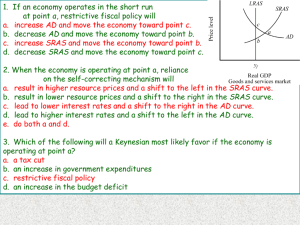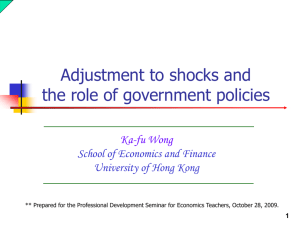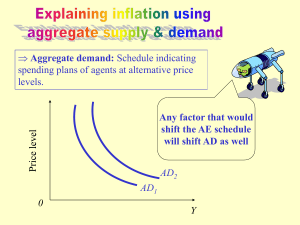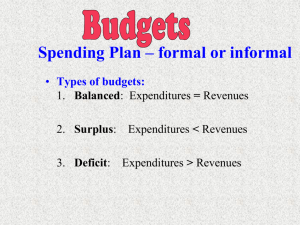Tiffany Ng
advertisement
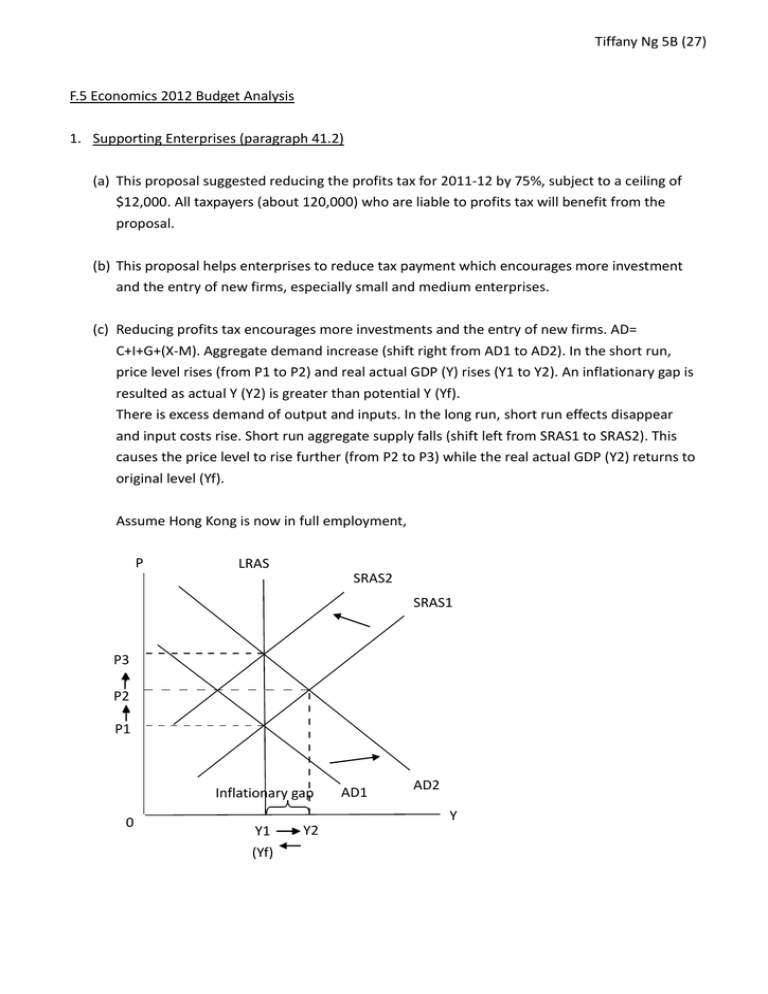
Tiffany Ng 5B (27) F.5 Economics 2012 Budget Analysis 1. Supporting Enterprises (paragraph 41.2) (a) This proposal suggested reducing the profits tax for 2011-12 by 75%, subject to a ceiling of $12,000. All taxpayers (about 120,000) who are liable to profits tax will benefit from the proposal. (b) This proposal helps enterprises to reduce tax payment which encourages more investment and the entry of new firms, especially small and medium enterprises. (c) Reducing profits tax encourages more investments and the entry of new firms. AD= C+I+G+(X-M). Aggregate demand increase (shift right from AD1 to AD2). In the short run, price level rises (from P1 to P2) and real actual GDP (Y) rises (Y1 to Y2). An inflationary gap is resulted as actual Y (Y2) is greater than potential Y (Yf). There is excess demand of output and inputs. In the long run, short run effects disappear and input costs rise. Short run aggregate supply falls (shift left from SRAS1 to SRAS2). This causes the price level to rise further (from P2 to P3) while the real actual GDP (Y2) returns to original level (Yf). Assume Hong Kong is now in full employment, P LRAS SRAS2 SRAS1 P3 P2 P1 Inflationary gap 0 AD1 AD2 Y Y1 (Yf) Y2 2. Preserving Employment (paragraph 48) (a) This proposal suggested that the government would inject $100 million into the Enhancing Employment of People with Disabilities through Small Enterprises Project, under which funding is granted to non-government organizations to set up small enterprises employing people with disabilities. (b) This proposal encourages the setting up of more small enterprises which will employ people with disabilities. These people will enter the labour force. Human resources and the maximum production capacity of the economy may increases. (c) As people with disabilities will be employed, employed population increase and there is an increase in human resources. The maximum production capacity increases. Both long run aggregate supply (LRAS) and short run aggregate supply (SRAS) increase. (LRAS shifts right from LRAS1 to LRAS2 while SRAS shifts right from SRAS1 to SRAS2). In addition, the government will also inject % 100 million into the project. This increases government consumption expenditure demand. Hence, AD also increase. (shifts right from AD1 to AD2) In the short run, price level will falls (from P1 to P2) while real actual GDP (Y) rises (from Y1 to Y2). A deflationary gap is resulted as the actual Y is greater than the potential Y (Yf2). There is an excess supply of output and inputs. In the long run, short run effects disappear and input costs fall. Short run aggregate supply rises (shift right from SRAS2 to SRAS3). The price level falls further (from P2 to P3) while the real actual GDP (Y) rises further to Yf2. Assume Hong Kong is now in full employment, P LRAS1 LRAS2 SRAS1 SRAS2 SRAS3 P1 P2 P3 Deflationary gap 0 AD2 AD1 Y Y1 (Yf1) Y2 Y3 (Yf2)

